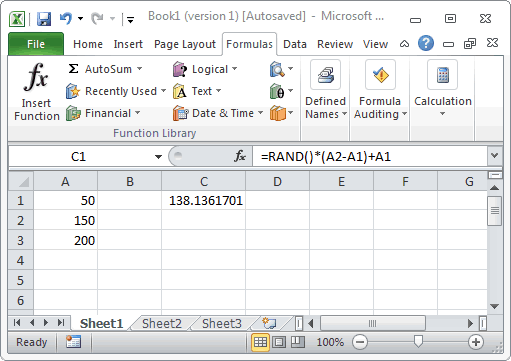This Excel tutorial explains how to use the Excel RAND function with syntax and examples.
To create a random number between a range, you might also want to look at the RANDBETWEEN function.

Based on the spreadsheet above, the following Excel RAND examples would return:
Description
The Microsoft Excel RAND function returns a random number that is greater than or equal to 0 and less than 1. The RAND function returns a new random number each time your spreadsheet recalculates.To create a random number between a range, you might also want to look at the RANDBETWEEN function.
Syntax
The syntax for the Microsoft Excel RAND function is:RAND( )
Parameters or Arguments
There are no parameters or arguments for the RAND function.Note
To create a random number between two numbers, you can use the following formula:=RAND()*(b-a)+aWhere a is the smallest number and b is the largest number that you want to generate a random number for. Please note, that this formula will never generate a number at the highest end of the range.
=RAND()*(25-10)+10The formula above would generate a random number between 10 and 24.9999999.
Applies To
The RAND function can be used in the following versions of Microsoft Excel:- Excel 2013, Excel 2011 for Mac, Excel 2010, Excel 2007, Excel 2003, Excel XP, Excel 2000
Type of Excel Function
The RAND function can be used in Microsoft Excel as the following type of function:- Worksheet function (WS)
Example (as Worksheet Function)
Let's look at some Excel RAND function examples and explore how to use the RAND function as a worksheet function in Microsoft Excel:
Based on the spreadsheet above, the following Excel RAND examples would return:
=RAND()*(A2-A1)+A1 Result: random number (between 50 and 149.9999999) =RAND()*(A3-A1)+A1 Result: random number (between 50 and 199.9999999) =RAND()*(200-100)+100 Result: random number (between 100 and 199.9999999) =INT(RAND()*(200-100)+100) Result: random number (between 100 and 199, integer value)




